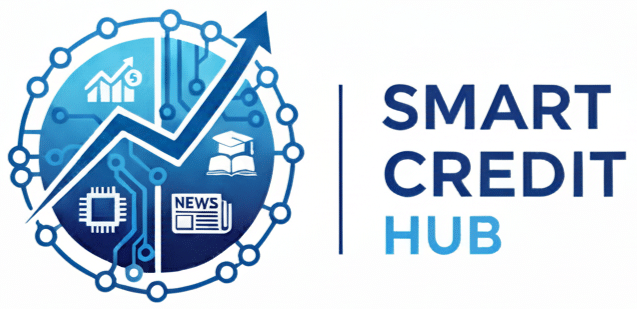Nearly 200 million people have signed up for courses through massive open online courses. This shows how online learning platforms are changing education around the world.
This article digs into what MOOCs are, their clear definition, and why they’re important. We’ll look at their history, types, and top platforms like Coursera, edX, and Udacity. Plus, we’ll explore benefits, challenges, accreditation, and what’s next.
Related content:
You will stay on the same website.
This piece explains how MOOCs are part of a bigger picture of free online courses. It uses an informative style and solid facts. This way, we see how MOOCs are shaping higher education and job opportunities.
In the following sections, we’ll provide quick, fact-based info. This will help teachers, employers, and students grasp MOOCs’ value and practicality today.
What Are MOOCs?
The term describes a modern learning approach that reaches large numbers of people. Readers often wonder about MOOCs and how they’re different from regular online classes. This part explains MOOCs and what students can expect from these courses and massive open online courses.
Definition and Overview
A MOOC is a Massive Open Online Course available on the web. These courses allow unlimited participants and often let you audit for free. They typically have video lectures, readings, forums, quizzes, peer reviews, and optional paid certificates.
Leading providers like Coursera, edX, and Udacity offer content from colleges, industry experts, and educators. This blend lets students learn college-level material without being officially enrolled. MOOCs are known for being big, open, and online.
Key Characteristics of MOOCs
Massive: thousands, or even hundreds of thousands, can enroll. Open: many can join without paying. Online: all activities are on the internet.
Courses are modular and time-limited, with options for session-based or go-at-your-own-pace learning. Topics range from beginner to advanced skills. For recognition, students can choose from free access, verified certificates, microcredentials, or complete specializations, but some may cost.
| Characteristic | Description | Typical Example |
|---|---|---|
| Scale | Designed for very large enrollments spanning global audiences | Coursera machine learning class with tens of thousands of students |
| Openness | Materials often available without formal admission or tuition | edX audit option for many university courses |
| Delivery | Fully online with video, readings, discussion forums, and quizzes | Udacity nanodegree modules with project reviews |
| Structure | Modular units; can be instructor-led sessions or self-paced | Session-based specialization vs. self-paced professional course |
| Credentialing | Range from free audit to paid verified certificates and microcredentials | Verified certificate or professional certificate on Coursera |
History of MOOCs
The journey of massive open online courses began with digital education trials and the early 2000s open educational resources movement. Teachers and schools tried sharing classes and resources online. This paved the way for the growing interest in online learning that could reach beyond local classrooms.
The Emergence of Large-Scale Courses
In 2011, Stanford University’s artificial intelligence course attracted hundreds of thousands globally. This was a turning point. Major MOOC platforms like Coursera, edX, and Udacity were established in 2012. This led to academic debates on the value and risks of these courses.
Massive open online courses shone in the spotlight as a new educational model. Supporters celebrated their free access and worldwide reach. Yet, some were skeptical about course completion and educational quality. This prompted efforts to improve how courses were designed and assessed.
Evolution Over the Years
MOOC platforms evolved from offering just free courses. They started providing paid certificates, forming corporate ties, and launching online degrees. Earning through microcredentials and professional certificates became more common.
Technology got better too. Video production, mobile apps, and new learning tools enhanced user engagement. Tools for peer assessment and online proctoring boosted the trust in these online courses for credit. Universities and businesses began using these platforms for training and education.
Now, the trend is towards competency-based learning, linking with on-campus systems, and MOOCs that can count towards college degrees. This move towards sustainable models benefits different learners and meets various educational needs.
Types of MOOCs
Online learning splits into clear types, fitting different goals. It’s helpful to know these types to choose wisely. Each type of MOOC uses unique tools, styles for testing, and ways to connect.
xMOOCs vs. cMOOCs
xMOOCs are led by instructors. Think of platforms like Coursera and edX. They use video lectures, quizzes, and auto grading. These courses can handle lots of students and give clear data on performance.
cMOOCs are about learning together. Users share ideas in forums, blogs, and through peer reviews. This method boosts creative thinking and problem solving. It’s more about making and sharing content than following a strict lesson plan.
So, xMOOCs and cMOOCs have their pros and cons. xMOOCs are great for delivering content and grading. cMOOCs shine with teamwork and coming up with new ideas. Now, many MOOCs mix these features to cater to different needs.
Specialized MOOCs
Specialized MOOCs focus on career skills. Think professional certificates and nanodegrees from Udacity. Giants like Google and IBM often help create these courses. These courses are practical for career growth.
These courses are made for specific industries, like healthcare or cybersecurity. Employers use them to teach teams new skills. They’re designed with jobs in mind. This helps bridge any skill gaps within teams.
Partnerships between platforms and companies lead to job-ready programs. They mix projects, tests, and recognized credentials. This gives learners hands-on experience, making them ready for work. It also helps companies find skilled workers.
Benefits of MOOCs
MOOCs provide top-notch lessons from places like Harvard, MIT, and big companies. Anyone from around the globe can access these courses without needing to move. This is great for those who can’t attend classes in person or don’t have local options.
They offer flexible schedules and different ways to learn. You can go at your own pace or use mobile learning to fit your busy life. There are also materials for people who speak other languages or have disabilities.
These options are great for people everywhere, from working parents to those wanting to learn new skills. Even employers use these platforms for easy and cost-effective training. This way, they can offer the latest knowledge without the heavy costs.
Accessibility and Flexibility
You can study at night or on weekends with MOOCs. With mobile apps and online forums, you can learn wherever you are. This makes learning easy for everyone, no matter where they live or their busy schedules.
Most MOOCs let anyone sign up and start learning for free. You can try out different subjects before you fully commit. This opens up education to more people worldwide.
Cost-Effectiveness
Many MOOCs let you learn for free, but you can pay for special certificates. These cost much less than college degrees. This way, learning new skills is more affordable for everyone.
This saves money for students and companies. Students save on things like travel and living costs. Companies can easily teach their teams new skills. This smart investment gets you job-ready fast without the need for a degree.
| Benefit | How It Works | Typical Outcome |
|---|---|---|
| Access to elite content | Courses from Harvard, MIT, Stanford via mooc platforms | Broader learning options for global students |
| Flexible learning | Self-paced lessons, mobile access, subtitles | Study that fits work and life |
| Low-cost credentials | Free online courses for audit; paid certificates available | Affordable skill certification |
| Employer training | Scalable courses for teams on mooc platforms | Improved workforce skills with lower spend |
| Equity and inclusion | Open enrollment and multilingual support | More learners can pursue education |
Challenges of MOOCs
MOOCs have changed how we access education, but they face some big challenges. Issues include keeping students interested, making sure courses are consistent, and how success is measured online.
Completion Rates and Engagement
Many online courses show low completion rates. Only a few students out of many finish their courses.
Students have different reasons to join. Some want to learn a bit and don’t aim to get a certificate. Working adults and people taking care of families often can’t keep up because of time.
The way a course is built and the chance to talk to teachers affect how interested students are. Platforms like Coursera and edX try new ways like group work, set deadlines, and fun activities to keep students coming back.
Making classes interactive and breaking them into smaller parts can also help. Using data to find students who might quit and helping them early is another strategy.
Quality of Courses
The quality of courses can vary a lot, leading to different experiences for learners. Some courses are from well-known universities and are carefully checked, while others are not.
Working with accredited universities helps keep course quality high. Having courses reviewed by experts and aligned with job skills adds value.
Platforms offer certificates and exams that count for credit to build trust. They update courses based on feedback to make the content better and fill in gaps.
The success of online learning will depend on making improvements in how many students finish courses and how good those courses are. This includes better course design, more support, and strict quality checks.
How MOOCs Work
Learning through MOOCs starts with an easy sign-up and clear course outlines. Users find classes by exploring catalogs and syllabi. They pick a format that matches their schedule.
Enrolment Process
Signing up requires creating an account and verifying an email. Then, you choose a course. You can audit courses for free or pay for a certificate track.
Platforms offer financial aid and free trials. Coursera has Coursera Plus subscriptions, while edX provides verified tracks. You can apply for financial aid or opt for monthly payments.
To get a paid certificate, you must verify your identity. This includes photo ID checks and secure payments. These steps ensure the certificate’s value.
Course Structure and Format
MOOC courses are divided into weekly sets. They include videos and readings. Quizzes offer instant feedback, and peer reviews foster thinking.
Forums and posts by instructors build a learning community. Some classes have projects or use tools like GitHub.
There are instructor-led courses with deadlines and self-paced ones. Mobile apps and subtitles make learning easy anywhere.
| Aspect | Typical Features | What Learners Should Expect |
|---|---|---|
| Enrolment | Create account, audit or paid track, financial aid | Quick start for free audits, extra steps for verified certificates |
| Delivery | Video lectures, readings, quizzes, forums | Short sessions per week, clear milestones |
| Assessment | Automated grading, peer review, proctored exams | Immediate quiz feedback, scheduled assessments for certificates |
| Flexibility | Instructor-paced vs self-paced, mobile access | Choose based on time availability and learning style |
| Integration | Third-party tools like GitHub, Jupyter, LMS connectors | Hands-on practice for technical subjects and projects |
Popular MOOC Platforms
Learners can choose from top MOOC platforms, each serving different goals. These platforms offer a mix of courses, credentials, and tools for various needs. Below is an overview of their features, business models, and key offerings.
Coursera
Coursera originates from Stanford, working with universities and companies. It provides courses, specializations, and degrees. You can audit classes for free or pay for verified certificates and degrees. Features noteworthy programs like Google Certificates and university degrees. Coursera Plus offers subscriptions and corporate training.
edX
edX, started by MIT and Harvard, delivers high-quality courses and certificates. Users can take courses for free or opt for verified certificates and credit options. It has now formed new partnerships but stays a leader in MOOCs, offering services to businesses too.
Udacity
Udacity is known for tech-focused Nanodegrees, from AI to cloud computing. Its learning is project-based with mentorship and career help. This platform suits those looking for tech jobs, offering paid courses, partnerships, and job services.
This comparison helps you see what each platform offers, like course types, credentials, and costs.
| Platform | Primary Focus | Credential Types | Pricing Model | Typical Learners |
|---|---|---|---|---|
| Coursera | Academic courses and professional programs | Certificates, specializations, full degrees | Free audit, paid certificates, subscriptions, corporate licensing | Students, professionals, enterprises |
| edX | University-level courses and advanced credentials | Verified certificates, MicroMasters, credit pathways | Free audit, paid upgrades, credit fees, enterprise solutions | University learners, credential seekers, institutions |
| Udacity | Industry-focused tech and vocational training | Nanodegrees, project portfolios | Paid Nanodegree subscriptions, corporate training deals | Career switchers, tech professionals, employers |
Who Uses MOOCs?
MOOC courses are popular worldwide. They help people gain practical skills, formal credentials, or personal growth. Students of all ages, from different places and educational backgrounds, enroll in them. Many learners are far from where the courses originate.

Individual Learners
Among these, you’ll find working professionals looking to upskill, students adding to their studies, lifelong learners diving into new areas, and job seekers improving their skills. They often start with free classes before moving to paid options. People take these courses for many reasons, like career growth, learning new things, or saving money.
The range of learners is diverse. They come from everywhere, young and old, cities and countryside. Some aim to change careers. Others want to support their hobbies or meet educational goals.
Corporations and Organizations
Companies turn to MOOCs to train, onboard, and reskill employees on a large scale. Services like Coursera for Business and edX for Business provide specialized content. Top firms sponsor courses matching their needs.
Nonprofits and governments also embrace MOOCs for training and education. They offer courses in tech fields like data science. These partnerships make training accessible and outcomes easy to measure.
| User Group | Primary Use Cases | Typical Motivations |
|---|---|---|
| Individual learners | Upskilling, career change, academic support, personal enrichment | Career growth, curiosity, credentialing, cost savings |
| Corporations and organizations | Employee training, onboarding, reskilling, custom programs with providers | Scale training, align skills with business needs, reduce training costs |
| Governments and NGOs | Public education, workforce development, community training | Improve employment prospects, broaden access to free online courses |
| Academic institutions | Supplemental learning, blended courses, outreach | Expand reach, offer flexible learning options, test new curricula |
MOOC Accreditation
Online learning accreditation matters for how jobs and schools see courses. It’s key to know about mooc accreditation, verified certificates, and credit options from providers.
Understanding Accreditation in MOOCs
Most MOOCs don’t give out accredited degrees directly. But, they’re often from respected schools like Harvard or the University of California. This allows students to join programs that could count for college credit.
Some MOOCs offer paths that can earn you credits. For instance, edX MicroMasters and Coursera MasterTrack can lead to credits for full degrees. Verified certificates and secure exams ensure student identity and maintain high testing standards.
Verified certificates confirm identity checks and passed exams. Proctored exams minimize cheating and boost employer trust. University and platform partnerships enhance credential value.
The Impact of Accreditation on Learners
Credit-eligible courses can be transferred academically and are more recognized publicly. Fields like IT and business especially value these certificates from well-known schools.
However, not all companies view certificates the same way. Acceptance can depend on the industry and where the certificate came from. Certificates from places like Stanford or MIT generally mean more than unverified ones.
Learners should choose well-regarded MOOC providers and aim for credentials that meet official standards. Adding verified certificates to a project portfolio can boost job applications and show real-world skills.
Below is a comparison to help decide among options from top platforms.
| Program Type | Typical Issuer | Credit Eligibility | Verification | Best For |
|---|---|---|---|---|
| Verified Certificate | Coursera, edX, Udacity | Rarely for full credit; sometimes stackable | Photo ID, proctored quizzes | Skill proof for resumes |
| MicroMasters / Specialization | edX, Coursera (university partners) | Often credit-bearing or credit-eligible | Proctored exams, verified certificates | Graduate credit pathway, career advancement |
| Online Degree Modules | Universities on Coursera, edX | Full academic credit toward degrees | University-level proctoring and assessment | Formal degree completion |
| Industry Nanodegree / Certificate | Udacity, LinkedIn Learning partners | Typically not academic credit | Project review, mentor checks | Practical, job-ready skills |
The Future of MOOCs
Massive open online courses are changing the way people learn. They’re shaped by technology, what employers need, and new ways to show what you know. These elements alter how students, colleges, and businesses interact with online courses.
Trends in Online Education
Learners now look for short programs that prepare them for jobs. Platforms like Coursera and edX offer professional certificates. These can be combined to earn degrees.
Education now focuses on what you can do, not how long you sit in class. This matches what employers want. Subscription models make it easy for companies to teach their teams online.
AI helps make learning personal and improves how well students do. Adaptive tools allow teachers to update courses based on student performance.
Predictions for MOOCs
There will be more professional certificates and online degrees. Universities will join with Coursera, edX, and Udacity to reach learners everywhere.
It will get easier to use online course credits in the job market. Employers will value these online certificates more for jobs and promotions.
New technologies like AR and VR will make learning more interactive and practical. Testing methods will change to better check real skills.
- Higher education and online courses will collaborate more for degrees.
- They’ll play a bigger role in lifelong education and job retraining.
- Course designs will be based on data to help students finish and excel.
MOOCs in Higher Education
Schools are teaming up with online platforms to reach more students and offer flexible learning options. They connect teachers and mooc companies to make new courses, MicroMasters, and degrees entirely online. These partnerships change how schools help learners, without replacing the on-campus experience.
Collaborations with Universities
Leading universities are joining forces with big mooc platforms to bring learning to more people. Harvard and MIT started edX to share their courses. Stanford’s teachers helped begin Coursera, adding many university courses. These partnerships allow schools to attract more students, try out new teaching methods, and make money from certificates and degrees.
Universities are experimenting with online platforms to offer smaller, stackable certificates. Programs like MicroMasters and professional certificates can lead to credit at universities. This way, schools get more known while mooc companies offer their tech, data analysis, and marketing worldwide.
Role in Traditional Learning Environments
Teachers mix MOOC content into their regular classes to make learning more engaging. They use mooc videos and quizzes to save class time for discussions and projects. This method makes learning more active and lets teachers dive into tougher topics efficiently.
MOOCs are helping close education gaps by providing extra help and courses for alumni. Students needing more support can watch lectures online. It’s also easier for workers and past students to learn new skills without having to move.
When schools think about using MOOCs, they consider academic honesty, maintaining quality, and the costs involved. They need to ensure credits are counted properly, assessments are secure, and everything meets official standards. Schools are finding a balance between new tech and traditional academic values through partnerships with mooc companies.
MOOC Success Stories
Online learning platforms have changed the way we think about career growth. They offer new skill paths. This part shares real stories of how MOOCs have helped people, companies, and schools. We see real success from using MOOCs for new jobs, promotions, and learning new skills.
Notable Alumni
Coursera’s reports highlight success stories. Many got industry certs and tech jobs. For instance, Google IT Certificate grads got interviews and jobs in tech support roles. Udacity’s graduates have moved into data science and AI jobs at big companies.
EdX and Coursera have helped career changes. People with no coding background learned Python and data analysis. Then, they landed data jobs. Big firms like Deloitte and Accenture have hired grads from these programs.
Case Studies of Impact
Companies are using MOOCs for training, filling jobs faster and reducing the need for outside hires. A big retailer worked with Coursera to improve staff skills in digital analytics. They saw quicker job readiness and less need to hire from outside.
Some universities give MOOC students credit toward degrees. This has helped students get ready for harder courses. These partnerships offer new ways into college for those who didn’t follow traditional paths.
Government job training programs are also using MOOCs. They report better job placement rates for those who finish courses. These programs have helped people get more job interviews and learn new skills.
| Program | Provider | Reported Outcome | Impact Metric |
|---|---|---|---|
| IT Support Certificate | Coursera (Google) | Entry-level IT hires and interview callbacks | Job interview rate up to 15% within 6 months |
| Data Analyst Track | Udacity | Career changes into data roles | Placement at companies like IBM and AT&T |
| Corporate Reskilling Program | Coursera (enterprise) | Reduced external hiring, faster internal promotions | Time-to-productivity cut by 20% |
| University Credit Pathway | edX | MOOC-to-degree credit pilots | Higher course completion and preparedness |
| Workforce Development Initiative | Various platforms | Scaled training for public sector roles | Improved job placement rates reported by providers |
These stories show the real power of MOOCs. They help with career changes, corporate training, and public job programs. Results and feedback show they offer real benefits for both people and organizations.
Potential Uses of MOOCs
MOOCs create new paths for lifelong learning and career growth. They connect formal education with the skills needed for work, giving quick access to new info. People in various careers use MOOCs to keep growing and quickly gain new skills.
For Continuing Education
Many workers use MOOCs for extra learning to keep their licenses. This includes nurses, teachers, and IT professionals. They take courses to stay up-to-date.
These online courses are easy to fit into a busy schedule and cut down on travel time. Earning certificates from sites like Coursera and LinkedIn Learning shows learning on resumes.
Skill Development and Retraining
MOOCs are great for learning new skills or changing careers. They offer courses in data science and cybersecurity. These courses focus on learning by doing.
Big companies like Google team up with MOOCs for courses that match their hiring needs. Paid courses often come with extra help, like coaching, to help job seekers.
Starting with free courses is a good option for those watching their budget. It lets people try out areas of interest without spending money at first.
MOOCs and the Job Market
Online courses changed how job seekers and employers meet. Now, companies like Google and IBM see MOOC certificates as signs of skill. These certificates can boost a resume and help job seekers get through the first hiring steps.
Some MOOCs offer clear paths to jobs. For instance, Google Career Certificates can lead to tech jobs. IBM’s programs can pave the way to work in cloud computing and AI. In these cases, finishing a course often leads straight to job interviews or offers.
The value of MOOCs depends on the industry. In tech, MOOCs are highly valued because they involve practical work. Yet, traditional fields might still prefer a college degree for some jobs.
MOOCs focus on filling skill shortages. They offer courses in areas like data analytics and digital marketing. These courses are intense and packed with projects that show what learners can really do.
Graded projects and final exams offer proof of skills to employers. MOOC platforms provide these as a way for job seekers to showcase their abilities.
The creation of courses benefits from feedback from employers. This ensures they stay relevant and teach skills that are in demand. It helps bridge the gap between what employers need and the skills job seekers have.
Hiring teams consider many factors, including MOOC certificates. When these certificates come with great project work, job chances increase. This makes candidates stand out among many applicants.
Comparing MOOCs to Traditional Education
When learners look at their options today, comparing MOOCs to traditional education clears up a lot. This section highlights major differences in learning methods and costs. It’s aimed at those thinking about MOOC courses or campus-based programs.
Differences in Learning Style
MOOC learning is mostly on your own and uses modules. You can study online at your own speed, often with videos, quizzes, and forums. It’s great for those who like flexibility and short, intense study times.
On campus, learning has scheduled classes and group activities. You get to meet in person, get live advice, and work on team projects. This helps with making friends and staying on track.
In MOOCs, you have to manage yourself more. Without classes every day, you need to set goals and keep going. In traditional schools, there’s more structure with advisors and classmates to keep you involved.
Some programs mix both MOOCs and campus learning. Schools like Arizona State University and sites like Coursera offer these hybrid options. They provide mentorship along with the flexibility of online studies.
Cost Analysis
MOOCs make starting easier. Many courses are free to check out, with paid certificates from places like edX, Coursera, and Udacity. The fee for a certificate is much less than for a full degree.
Traditional schools have tuition, campus fees, books, and living costs. Prices at public and private colleges can differ a lot. When planning costs, remember to include financial aid, scholarships, and loan interest.
Think about how much time and money you’ll spend against what you’ll earn back later. A certificate from a known platform can help switch careers cheaply. A degree gives you wide recognition and a deeper educational background.
Consider what employers in your field expect and what you aim to achieve career-wise. Sometimes, a verified MOOC certificate and shown projects are enough. For specific professions, you still need a traditional degree.
| Aspect | MOOC Courses | Traditional Education |
|---|---|---|
| Learning Style | Asynchronous, self-paced, modular | Synchronous, cohort-based, structured |
| Mentorship | Limited; forum and mentor options | Regular advisor and faculty access |
| Cost | Low to moderate; many free options | High; tuition, fees, living costs |
| Credential Value | Growing for skills, varies by employer | Widely recognized degree credentials |
| Time to Complete | Flexible; weeks to months | Fixed; semesters to years |
| Best For | Skill updates, career pivots, lifelong learning | Deep disciplinary study, professional licensure |
Conclusion
This conclusion sums up the main points about MOOCs. It explains MOOCs and their key features: open access, large-scale participation, and various formats. The recap mentions big benefits like being easy to access, flexible, and not costly. It also talks about the issues, such as few people finishing courses and the quality sometimes not being the best.
Top platforms like Coursera, edX, and Udacity have made learning more open to everyone. They offer focused job training. They work with universities and show how MOOCs connect school lessons to job skills. Highlighting the value of MOOCs, these platforms make learning possible for people of all ages and backgrounds.
The look ahead shows that online learning will evolve with more credentials, alignment with employer needs, and better use of technology. MOOCs will likely add to regular schooling and help with lifelong learning. They’ll offer specific skills and learning paths. Readers are advised to check the course credentials, make sure they match career goals, and use MOOCs as a way to improve skills and learn easily.



